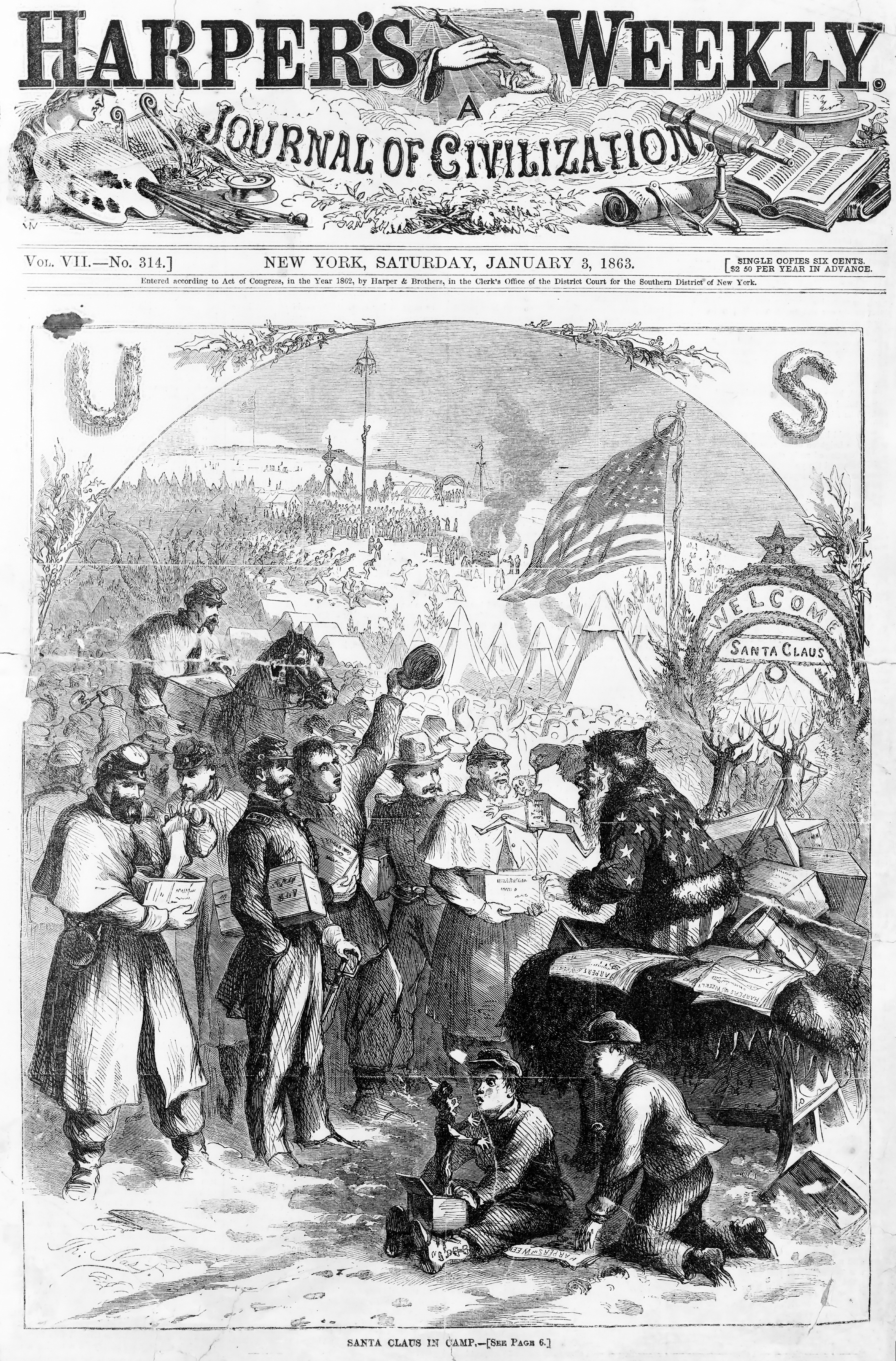
Yesterday was an interesting day in Fredericksburg in terms of ghosts, history, and Christmas. The fab fam and I went out to breakfast and then hit a park to let the kids run and play. On the way home we ran into a marching group of Civil War reenactors commemorating the 149th anniversary of the first Battle of Fredericksburg. These particular reenactors were the Irish Brigade, a Union Army group made up predominantly of Irish Americans that were devastated during the Battle of Fredericksburg—their numbers were reduced from over 1600 to 256—most casualties occurring on December 13th, 1862. We tagged along for the march which ended just a few blocks from my home at Marye’s Heights battleground wherein there was a commemoration for the more than 18000 casualties of the Fredericksburg battle….that’s right, more than 18000! What was wildest for me, however, was how enthralled Miles was by the whole thing—he really loves parades and reenactments it seems..
After that chance encounter with history, we headed over to Kenmore Plantation, which is one of the more famous historical sites in Fredericksburg that features a plantation house from the late colonial period that is pretty stunning. They were having a special tour highlighting the emergence of Christmas during the Victorian Era, and I learned a couple of cool things as a result. First and foremost, our modern vision of Santa Claus as an overweight, bearded man was illustrated by Thomas Nast for the first time during the Battle of Fredericskburg giving gifts to Union troops. In fact, the image was the cover of the January 3rd, 1863 Harper’s Weekly magazine. The first modern vision of Santa Claus that is still predominant in pop culture today. The image is also interesting in that it has Santa holding an effigy of Jefferson Davis being hanged. What’s more, Santa is wearing the colors of the Republic, he has a star studded shirt and striped pants that suggest quite clear which side he’s on.
Another fascinating historical tidbit I picked up at Kenmore was the popularity of the Christmas tree in US culture was influenced to some great degree by Godey’s Lady’s Book. In 1950, they included a doctored version of a previously published woodcut of the British Royal Family around their Christmas tree. The republished image had removed Queen Victoria’s crown and Prince Albert’s mustache to remake the engraving into an American scene—an early historical photoshopping of the details to erase the royal elements to make it more palatable for American. The photoshopped version of the image of this family around a Christmas tree is considered by many the most influential promotion of a decorated tree as a widely accepted part of the Christmas celebration.




